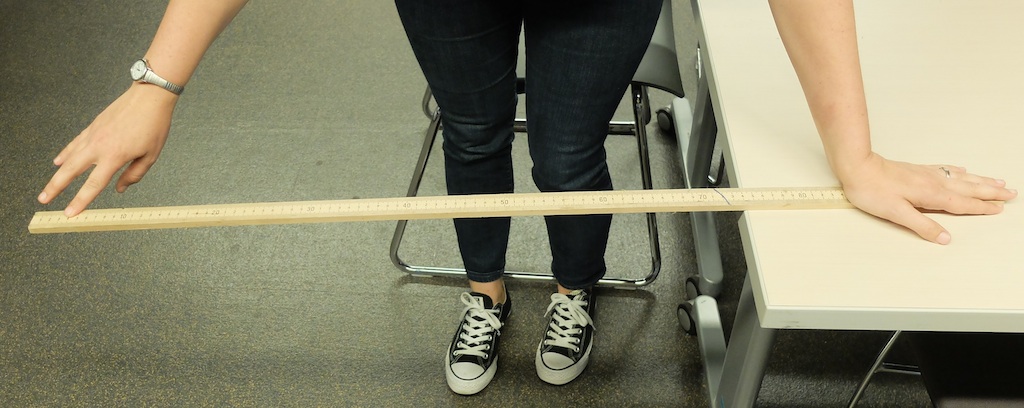
Pluck a Ruler
From Vibration to Sound

Clamp a ruler so that it overhangs the edge of a table, pluck the ruler, watch it vibrate and listen for any sound it makes.
Material
A foot-long ruler (or a meter stick)
A soda straw
A table
Optional a C-clamp
To Do and Notice
Clamp or hold a ruler so that it overhangs the edge of a table.
Start with it overhanging as far as possible while you can hold it firmly in place on top of the table.
Pluck the ruler and watch it vibrate up and down.
Listen, you probably do not hear a sound.
Hold the straw at one end so that the vibrating ruler touches the other end of the straw as it vibrates up and down. Listen to the ticking sound.
Shorten the rule a little bit, perhaps one inch, repeat the above experiment. Notice the ruler vibrates more rapidly. The straw ticking sound is more rapid.
Shorten the ruler so that 1/2 of the ruler overhangs.
Pluck it and notice that its vibration is a blur.
Now you may begin to hear a sound.
Shorten the overhang even more. Notice how the pitch of the sound gets higher as you shorten the ruler.
What's going on?
As you shorten the overhang notice how the vibration happens faster.
Notice that when you hear the pitch of a sound the pitch increases as the overhang gets shorter.
Sound is made by vibrating objects.
To be audible to a human ear as a sound with a pitch the vibration must be fast enough, at least 20 times per second or 20 hertz.
Math Root
When you cut the length of the overhang in half the frequency of the vibration quadruples.
We say that the frequency of vibration of an overhanging rod is inversely proportional to the square of the length of the overhang.
Scientific Explorations by Paul Doherty |
8 October 2015 |